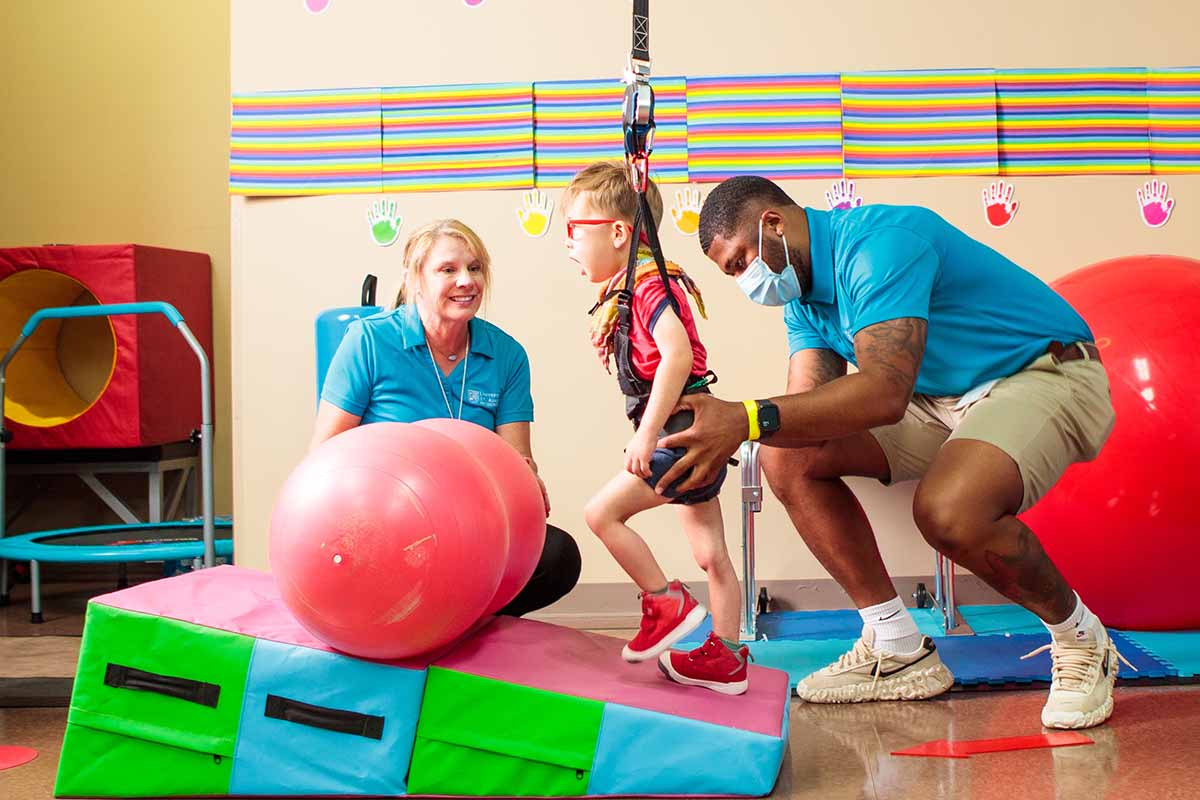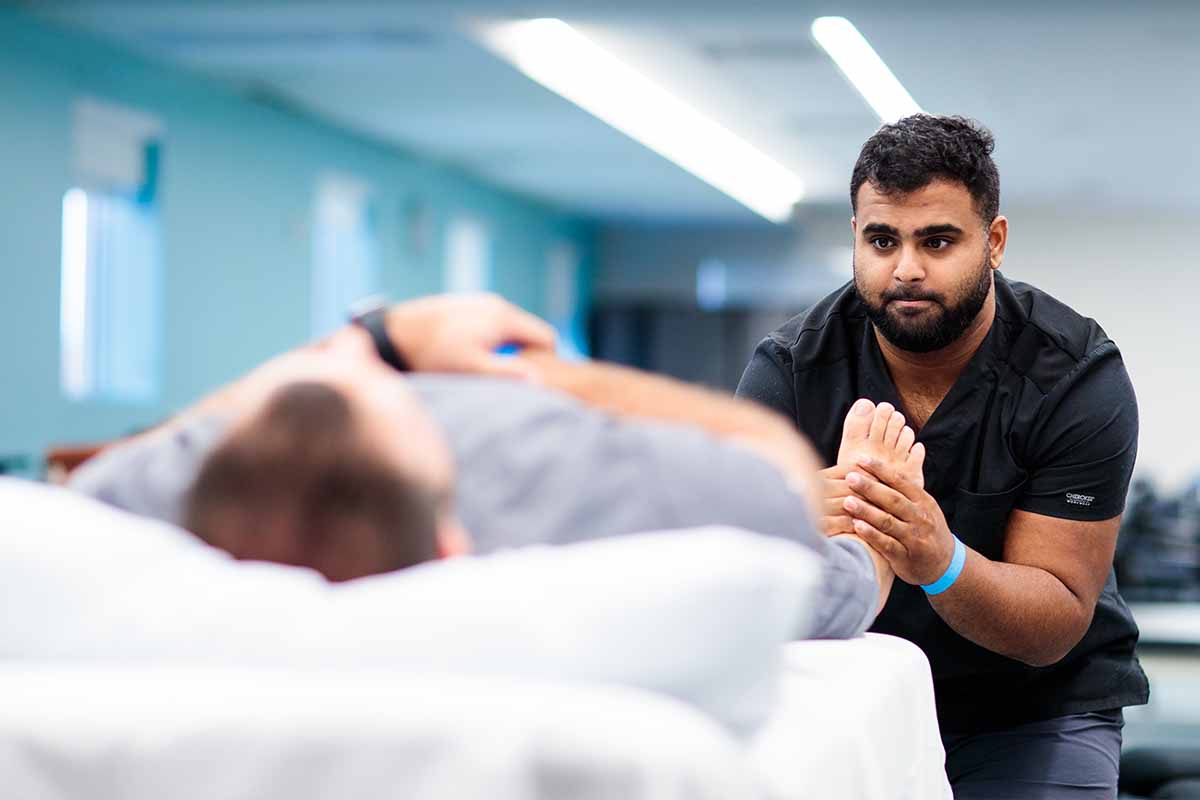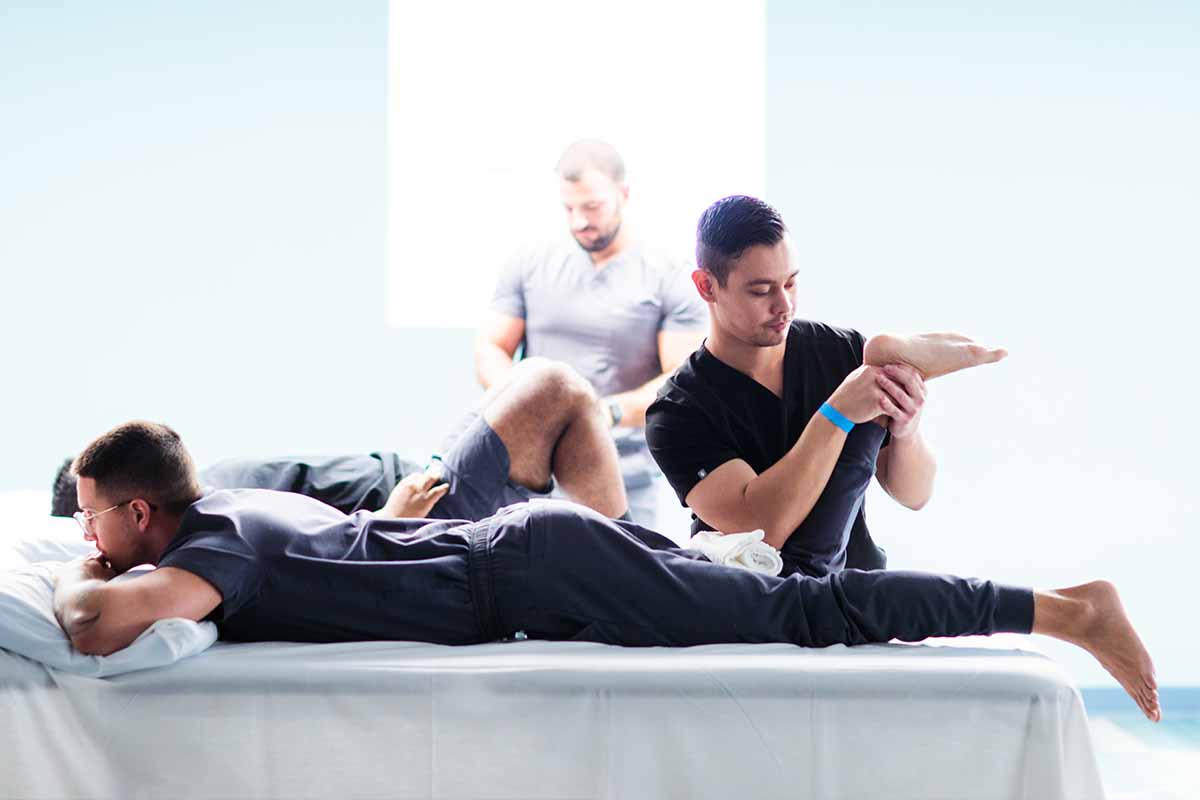
“I help students reflect on how they can be better practitioners who see outside the box—and use their critical thinking skills to treat complex patient problems with new approaches and techniques. I help students believe in themselves, so they develop the ability and skill to be the greatest PT they can be.”
So says Amanda Grant, PT, DPT, OCS, MTC, CLT, FAAOMPT, director of USAHS’ Clinical Orthopaedic Residency and Orthopaedic Manual Physical Therapy Fellowship programs, which are based on our St. Augustine campus. Dr. Grant is an alumna of USAHS’ Doctor of Physical Therapy (DPT), Manual Therapy Certification (MTC), and Fellowship programs—and is now a full-time faculty member and the director of two academic programs at only 40 years old.
“PT school has its grueling moments,” she says. “But I can be my students’ biggest advocate and fan. I give them a safe place where they can be vulnerable. Where they can freely express what they don’t know.”
Falling in Love with PT


Amanda Grant, program director
Even as a child, Dr. Grant wanted to be a physical therapist. “Anyone who got injured, I brought them into the nurse’s office at school,” she recalls. “I wanted to be the patient’s advocate and help them work through their fears.” An athlete from a young age, she joined her mother in coaching Special Olympics teams, working together with an inspiring physical therapist. After she broke multiple bones in her ankle during a high school basketball game, an intensive physical therapy regime enabled her to return to competitive soccer and track & field within just six months. “My PTs created an optimal environment for my body and mind to heal,” she says.
Choosing USAHS
While studying exercise and health promotion as an undergrad at the University of New England in Biddeford, Maine, Dr. Grant shadowed a physical therapist at a local clinic. That practitioner was Hayes Sweeney, MPT, an early graduate of USAHS (which formerly offered a master’s in PT). “I was very impressed with his critical thinking and hands-on manual therapy skills,” she says. “I knew I wanted to be as skilled as a clinician as he was, so I applied only to USAHS.”
When she enrolled, USAHS had only one campus, in St. Augustine, Florida, which “has a very high standard of quality, mentorship, and student experience,” she says. USAHS founder Stanley Paris, PT, PhD, a renowned proponent of manual therapy, was one of Dr. Grant’s professors. His wife Catherine Patla, PT, DHSc, MS, OCS, MTC, FAAOMPT, is still a preeminent faculty member. “Although it was challenging, I loved my time as a student,” Dr. Grant says.
“I was mentored by the best of the best. The minds I had access to—it was a great honor. I didn’t realize how lucky I was until years later.”
Dr. Grant and her partner, whom she met at USAHS, have a three-year-old daughter and one cat.


Life as a Program Director—and Practitioner
As a student, she volunteered at First Coast Rehabilitation, a private clinic founded by alumni that is located on campus. She worked on staff there for many years, treating patients of all ages with orthopedic, spinal, vestibular, and oncological issues—“the whole gamut,” she says. She has also done pro bono work at Flagler Hospital, which is located just adjacent to the USAHS campus.
One of her favorite aspects of PT practice is building relationships with patients over many sessions. “You take the time to listen so they feel heard. I love to see the sparkle in their eye when patients understand how much we care.” Dr. Grant maintains a treatment room on campus where she treats people within the USAHS family and underserved members of the local community.
As director of the Residency and Fellowship programs, which involve extensive one-on-one mentorship, Dr. Grant coordinates a team of mentors and is on that team herself. She says that physical therapists experiencing burnout or boredom can recharge their practice through these programs. “When you have a mentor, you keep enjoying your patients, you make your practice more individualized, and you reconnect with your passion for the profession.” The mentorship portion of the program can take place virtually or at approved clinical sites, which can be the student’s workplace if it meets requirements.
Alongside these responsibilities, Dr. Grant also teaches courses in the DPT program and seminars in the Continuing Professional Education (CPE) program. She enjoys seeing students grow at all levels. “There’s a chance that my students could be treating my family or me one day,” she says.
“I can teach them to be compassionate, kind humans to any human who walks through the door into the clinic, regardless of their physical ability or walk of life.”
Some of her former mentors are now her colleagues. Dr. Grant recently collaborated with Dr. Patla on a presentation for the American Physical Therapy Association’s Combined Sections Meeting, looking at how the diaphragm muscle is a powerhouse of extremity function. The professors created a clinical thinking algorithm about how PTs can make decisions in orthopaedic patient care, and where and how they can look outside the box.
Swimming Across the English Channel with a USAHS Team
Dr. Grant still plays in masters soccer leagues some years; she keeps her old ankle injuries in check by working on her ankles herself. But her most impressive athletic feat may be swimming in a relay race across the English Channel with a team of USAHS faculty and alumni.
Making this swim is a USHAS tradition begun with Dr. Paris and continued by Rob Stanborough, PT, DPT, MHSc, MTC, CMTPT, FAAOMPT, an alumnus and director of First Coast Rehabilitation. Dr. Stanborough had swum a relay across the English Channel in 2010; he reserved a boat and assembled a team for September 2013. Although Dr. Grant had limited experience with competitive swimming, she joined the six-person team.
“I’m really stubborn and really determined,” she says. “I lived in Catherine and Stanley’s pool that summer.” She was positioned as the last swimmer in the relay—and her portion, in French waters, was fraught with 25-knot winds, seals, and poisonous jellyfish that she was forced to navigate during the changing of the tides. “I was fighting the jellyfish and covered in stings,” she says. She explains that for the relay to be complete, the last swimmer must be completely out of the water. As she attempted to reach the shore, “I was repeatedly slammed into barnacle-covered rocks, and my foot got stuck while climbing out of the water. I still have scars on my knees from the adventure.” A teammate in the boat grabbed her by her bathing suit and lifted her up, causing a wardrobe malfunction, which she laughs about. But the USAHS team made it across from Dover, England, to the finish line in Brittany, France, in 11 hours, 22 minutes. “We were the fourth- or fifth-fastest team of the year,” she says. “Our names are written on the ceiling in a bar in Dover. We didn’t win anything, but we got bragging rights.”
It seems that Dr. Grant, in fact, has a lot to brag about.








